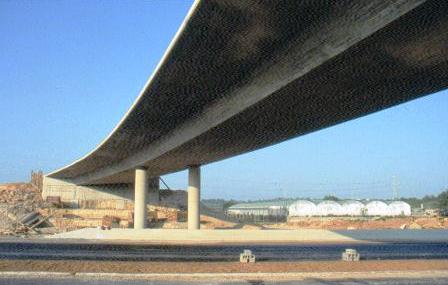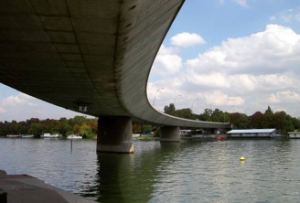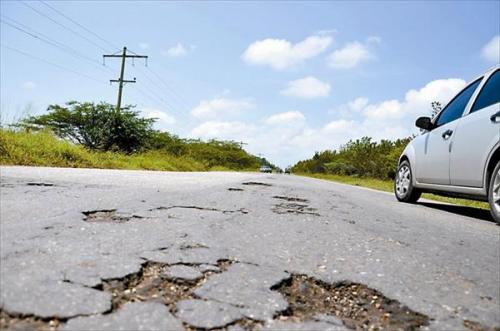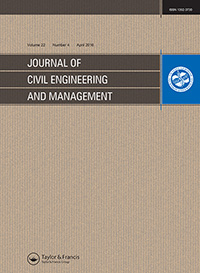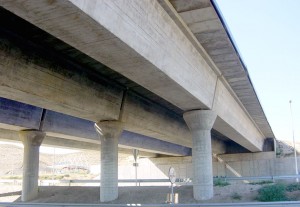
El artículo, titulado «Optimal pavement maintenance programs based on a hybrid Greedy Randomized Adaptive Search Procedure Algorithm», escrito por Víctor Yepes, Cristina Torres-Machí, Alondra Chamorro y Eugenio Pellicer, y publicado en el Journal of Civil Engineering and Management, presenta una innovadora herramienta para la gestión eficiente del mantenimiento vial. Este trabajo aborda cómo diseñar programas que maximicen la efectividad a largo plazo (Long-Term Effectiveness, LTE) en redes viales, superando las limitaciones presupuestarias y el desgaste progresivo de las infraestructuras. Para ello, se desarrolla un enfoque híbrido que combina los algoritmos Greedy Randomized Adaptive Search Procedure (GRASP) y Threshold Accepting (TA), lo que permite optimizar la asignación de recursos y cumplir con restricciones técnicas y económicas. Entre los resultados más destacados, se encuentra una mejora del 40 % en la LTE en comparación con estrategias reactivas, que también subraya la importancia de priorizar inversiones tempranas y de implementar tratamientos preventivos como la opción más eficiente a largo plazo.
Introducción
La infraestructura vial es uno de los activos más valiosos de cualquier nación, ya que tiene un impacto directo en el desarrollo económico y social al facilitar el transporte de bienes y personas, por lo que es necesario realizar un mantenimiento adecuado para evitar el deterioro y el incremento de los costes futuros de rehabilitación. Sin embargo, los presupuestos de las agencias públicas son limitados y no alcanzan a cubrir las necesidades de conservación, lo que genera una brecha cada vez mayor entre el estado actual de las infraestructuras y los niveles de inversión requeridos. En Estados Unidos, un tercio de las carreteras están en condiciones mediocres o deficientes, y uno de cada nueve puentes presenta deficiencias estructurales. En España, las necesidades de mantenimiento vial superan los 5500 millones de euros, pero los presupuestos se redujeron un 20 % en 2012, lo que agravó aún más la situación. Este mantenimiento tardío no solo incrementa los riesgos estructurales, sino que también triplica los costes de rehabilitación y los gastos operativos de los vehículos, lo que plantea un problema central: decidir cómo asignar los fondos disponibles de forma óptima para maximizar el rendimiento a largo plazo de las infraestructuras, respetando restricciones técnicas y económicas, y considerando los beneficios acumulados para los usuarios.
Metodología
Formulación del problema de optimización
El problema se define como la maximización de la LTE, un indicador que mide los beneficios acumulados derivados de una infraestructura bien mantenida durante su ciclo de vida.
- Función objetivo:
- Maximizar el área bajo la curva de rendimiento de las infraestructuras (Area Bounded by the Performance Curve, ABPC). Este área refleja la calidad y el nivel de servicio de la infraestructura a lo largo del tiempo.
- Restricciones:
- Presupuestaria: Garantizar que los costos anuales de mantenimiento no excedan el presupuesto disponible en cada año del periodo de planificación.
- Técnica: Mantener las secciones de la red en una condición mínima aceptable. Esto se evalúa mediante indicadores como el Urban Pavement Condition Index (UPCI, Índice de Condición del Pavimento Urbano), que clasifica la calidad del pavimento en una escala del 1 (peor) al 10 (mejor).
- Variables de diseño:
- Determinar qué secciones de la red deben tratarse, qué tratamiento aplicar y en qué momento realizarlo durante el horizonte de planificación.
- Parámetros:
- Inventario: Datos sobre el tipo de pavimento, su longitud y ancho, condiciones climáticas y características del tráfico.
- Técnicos: Condición inicial del pavimento, modelos de deterioro a lo largo del tiempo y el conjunto de tratamientos disponibles.
- Económicos: Costos unitarios de mantenimiento para cada tratamiento.
- Estratégicos: Periodo de planificación, tasa de descuento y estándares mínimos requeridos.

Algoritmo GRASP-TA
El enfoque híbrido combina dos estrategias complementarias:
- GRASP (Procedimiento de Búsqueda Aleatoria Codiciosa Adaptativa):
- Genera una población inicial de soluciones viables considerando una relajación controlada de las restricciones presupuestarias.
- Utiliza funciones de priorización para evaluar el impacto de cada posible tratamiento en la LTE y seleccionar las mejores alternativas mediante un proceso probabilístico.
- TA (Aceptación de Umbral):
- Realiza una optimización local a las soluciones generadas por GRASP.
- Permite aceptar soluciones ligeramente peores en las primeras iteraciones para evitar quedarse atrapado en óptimos locales.
- Ajusta iterativamente las restricciones presupuestarias relajadas en GRASP para cumplir con las condiciones originales.
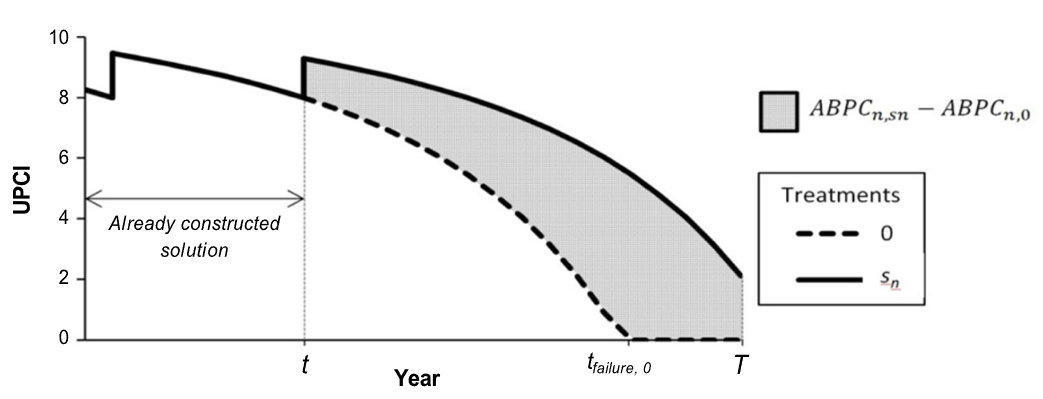
Caso de estudio: red urbana en Santiago, Chile
La red analizada se encuentra en Santiago de Chile. Está compuesta por 20 secciones con pavimentos flexibles (asfálticos) y rígidos (hormigón). El clima de la región es mediterráneo, lo que influye en los patrones de deterioro del pavimento. La condición inicial media de la red es 6,8, según el Índice de Condición del Pavimento Urbano (UPCI), lo que indica una calidad intermedia.
Para los pavimentos asfálticos, los tratamientos evaluados incluyeron opciones de preservación, mantenimiento y rehabilitación. En preservación, el sellado de fisuras aumenta la vida útil en 2 años y tiene un coste de 0,99 USD/m². En el mantenimiento, el fresado y la repavimentación funcional ofrecen 10 años de vida útil por 23,24 USD/m². En rehabilitación, la rehabilitación en frío alcanza los 13 años con un coste de 36,50 USD/m².
Para los pavimentos de hormigón, los tratamientos incluyeron preservación y rehabilitación. El pulido con diamante aumenta la vida útil en 10 años y tiene un coste de 15,39 USD/m². La reconstrucción completa proporciona 25 años de servicio por un coste de 134,60 USD/m². Estos tratamientos representan opciones para diferentes niveles de deterioro y requisitos estructurales.
El programa optimizado mostró un impacto significativo en la efectividad a largo plazo (LTE). Se logró una mejora del 40 % en la LTE en comparación con las estrategias reactivas. Los tratamientos preventivos dominaron las decisiones, seleccionándose en el 80 % de los casos, lo que evidencia su mayor efectividad frente a opciones correctivas o de rehabilitación.
En términos de coste-eficacia, no se seleccionaron los tratamientos reciclados. Aunque ofrecen beneficios similares en términos de vida útil, su alto coste los hace menos competitivos frente a alternativas más económicas, lo que destaca la importancia de equilibrar costes y beneficios en el diseño de programas de mantenimiento.
Análisis de escenarios
1. Escenarios de inventario:
Se analizaron redes con diferentes proporciones de pavimentos asfálticos y de hormigón, con configuraciones del 25 %, 50 % y 75 % para cada tipo. También se estudiaron tres condiciones iniciales de las redes: buenas, intermedias y deficientes. Este análisis permitió evaluar la influencia de las características estructurales y del estado inicial en la optimización de los programas de mantenimiento.
En todos los casos, los resultados mostraron que la optimización mediante el algoritmo GRASP-TA era superior a las estrategias reactivas tradicionales. Esto demostró que el método es altamente adaptable a diversas configuraciones de red y capaz de ofrecer soluciones efectivas en términos de LTE, independientemente de las características de la red o de su estado inicial.
2. Escenarios presupuestarios:
El análisis incluyó variaciones en el presupuesto total, con incrementos y reducciones de hasta el 20 %, así como cambios en la distribución de los fondos a lo largo del tiempo. Se evaluaron dos configuraciones principales para entender su impacto en el rendimiento a largo plazo.
El escenario con mayor inversión en los primeros años mostró un aumento significativo de la LTE. Esto puso de manifiesto que la asignación temprana de fondos mejora sustancialmente los resultados del mantenimiento. Por el contrario, los aumentos progresivos anuales redujeron la LTE en un 15 % respecto al caso base, lo que indica que posponer la inversión perjudica el rendimiento de la red.
Conclusiones
Asignar más recursos durante los primeros años de un programa de mantenimiento es fundamental para optimizar el rendimiento a largo plazo de las infraestructuras. Este análisis pone de manifiesto la importancia de una planificación presupuestaria estratégica, ya que señala que el momento en que se invierten los recursos tiene un impacto considerable en los beneficios acumulados de la red.
- Eficiencia del método GRASP-TA: Diseña programas que maximizan la LTE bajo restricciones técnicas y económicas reales.
- Importancia de la prevención: Las actividades preventivas son significativamente más rentables a largo plazo.
- Estrategias presupuestarias: Es esencial priorizar mayores inversiones en los primeros años del programa para maximizar su impacto.
- Limitaciones de los tratamientos reciclados: Aunque presentan beneficios ambientales, su alto costo relativo limita su inclusión en las soluciones optimizadas cuando solo se consideran aspectos técnicos y económicos.
Como recomendaciones futuras habría que integrar criterios de sostenibilidad, como impactos ambientales y sociales, y extender el análisis a redes más grandes y diversas.
Referencia:
YEPES, V.; TORRES-MACHÍ, C.; CHAMORRO, A.; PELLICER, E. (2016). Optimal pavement maintenance programs based on a hybrid greedy randomized adaptive search procedure algorithm. Journal of Civil Engineering and Management, 22(4):540-550. DOI:10.3846/13923730.2015.1120770
Aquí os dejo el artículo por si os resulta de interés.


